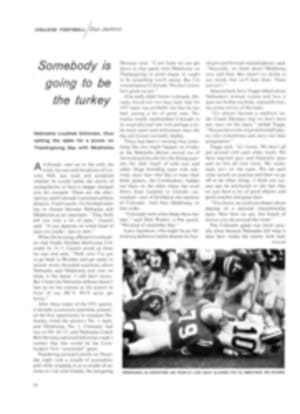
A master mariner writes grippingly of the seagoing war with Cape Horn
Cape Horn on the southern tip of the American continents is one of the world's more formidable obstacles to navigation. From the time of Magellan until the Panama Canal opened—that is, throughout the age of sail—there was no choice but to deal with the Horn and its tempests. Steam, the canal and radio navigation have changed the challenge, and today the sight of a sail in these latitudes is rare, giving evidence of adventurousness or sport rather than mercantile need.
In his book The War with Cape Horn (Scribner's, $10), Alan Villiers has written compellingly of the last era when sailing men dealt with the Cape regularly. The strength of the book is that it faithfully recreates the atmosphere on board the square-riggers at the start of this century. With a few words Villiers brings the scenes alive: a ship's master employing all his skills to save his vessel from disaster in hurricane conditions; the wretched apprentices serving under a bad master, frozen, wet through, the water swirling into their forecastle, a deckhouse cracked open. Villiers knows the subject well. As a boy he served on sailing ships plying the notorious Tasman Sea between Australia and New Zealand, and eventually became master of his own ship, the Joseph Conrad, which in 1935 was the last full-rigged craft to round the Horn.
The year 1905 was the bottom of a bad weather cycle in the vicinity of Cape Horn. Those of us who have made the passage in a yacht recently are fortunate that the past few seasons have been mild ones. But even these can be a fright. My own solo experience in Gipsy Moth in these latitudes during the early months of 1967 was sufficiently unnerving. The barometer had been dropping for 40 hours and it was raining steadily. The sun showed through the heavy clouds long enough to get a sextant sight to verify my position, for which I was grateful. I had just finished plotting the result, and had decided on my best heading, when the wind backed in a few seconds from northwest to south. In a matter of minutes a force 9 gale was blowing and it got so dark that I did not bother keeping a watch. I set the off-course alarm and turned in. I lay there in the dark with the boat rushing into the black night. The next morning the Horn appeared suddenly—less than 10 miles away. By noon I had passed it, safe and impressed.
The era of which Villiers writes was a busy one in this corner of the globe. In 1905 about 400 square-rigged ships made the passage around the tip of South America. No fewer than 50 of them sank. I think that the biggest cause was bad navigation. Take the Bidston Hill. The master did not know she was near shore until the overhanging cliffs of Staten Island (not the one in New York Harbor) began knocking her topgallant masts down, killing half the crew in a tangle of broken lumber and torn canvas. The master at the inquiry said he had not been able to get a navigational sight for 12 days while beating to pass the Horn, yet Captain James Learmont, one of the finest masters in sail, was making passage of the Horn at the same time, and he had obtained good star fixes.
Yet even Captain Learmont had his problems in these waters. His ship, the Bengairn, was bound out of Newcastle, New South Wales toward Valparaiso with a cargo of coal. He was worried about the way the coal had been trimmed; he had been curtly snubbed by the boss trimmer. "You do your job and we'll do ours," he was told.
The Bengairn had scarcely got into the Tasman Sea when she was knocked down onto her beam ends, probably in one of the fierce southerly busters for which the Tasman is notorious. The coal shifted and the Bengairn could not get up. Half the main hatch had gone under and the sea had burst in. The ship was making water. Captain Learmont saved his ship, but he was understandably critical of dockside expertise ever afterward.
The Germans were the best sailors of the period; they seldom lost a man or a ship. They treated their crews better than others did, which is to say they treated them like human beings. One German ship that nearly fell victim to the Horn, however, was the Susanna. Her captain had tried to get by with only one dependable clock (he should have had at least three) and when he began to question its accuracy he was, literally, lost. And so, for 99 days and 500 unnecessary miles the Susanna battled storms south of the Horn, fearful that if she turned north prematurely she would come on the rocks.
Not all ship losses were due to poor navigation or bad seamanship. Captain Thomas England Parker lost his vessel, the Ellenbank, off Cape Horn in 1885 in a calm. All hands except himself perished. A heavy swell had rolled in from the west, where there is a 6,500-mile clear fetch. The Ellenbank, sitting on the water with all sail set but no wind in them, keeled right over. Before she recovered, another swell from the south tipped her downward at right angles, putting her masts under. She stayed that way, and some days later—no one knew how many—Captain Parker was found sitting alone on the upturned keel.
This is a worthy book, filled with exciting, gripping sea tales. Any yachtsman reading it under the smiling sun over a peaceful sea will be justly reminded of the majestic and irresistible power of the ocean.

